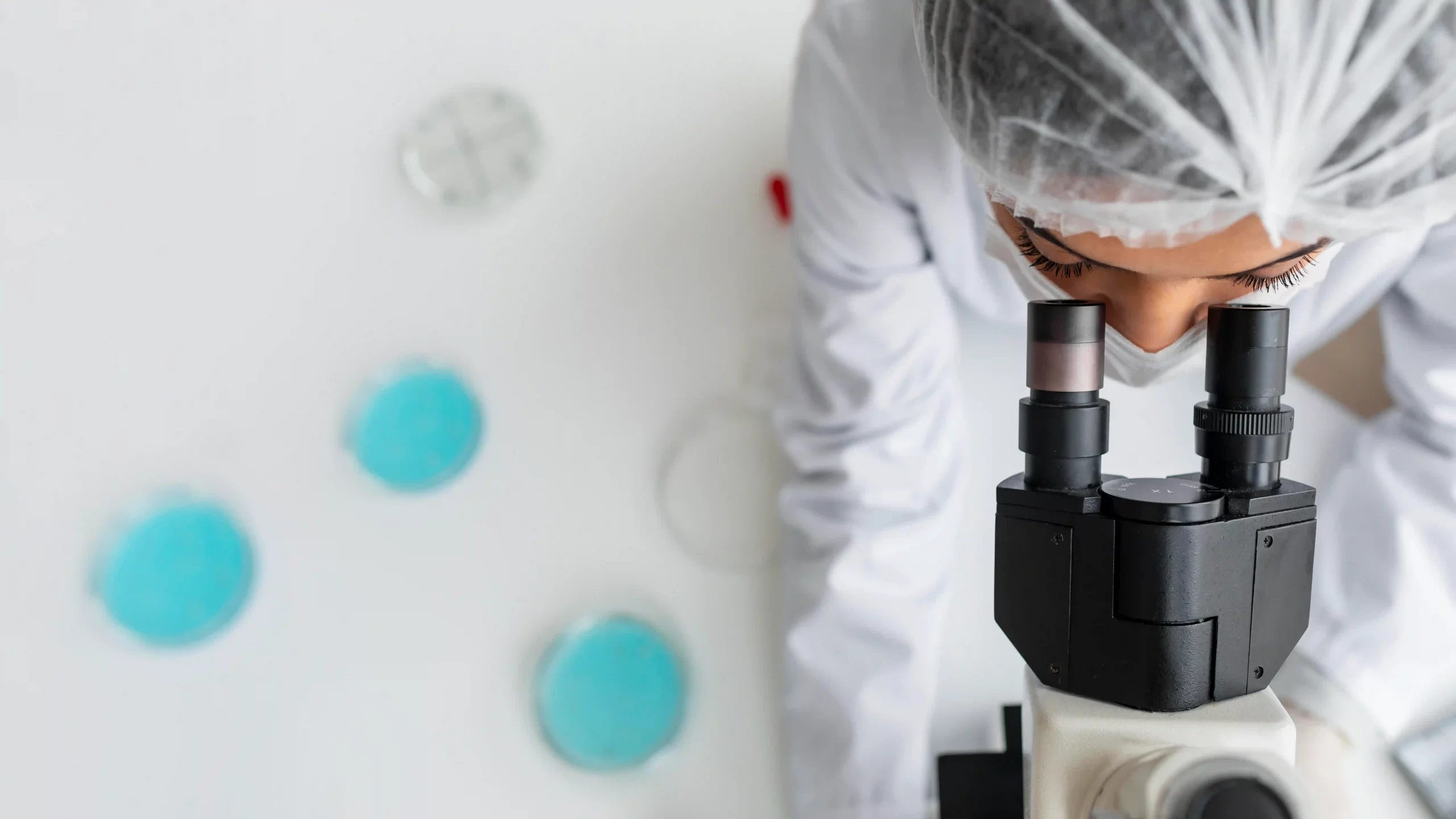How to Choose the Best Slide Stainer for Your Histology Lab: 2025 Buyer’s Guide
Deciding on the slide stainer for your histology laboratory can be quite a challenging task that involves performance quality, speed of operation and financial implications. This manual delves into aspects to ponder for achieving the best outcomes in your lab work.
What Factors Should You Consider When Selecting a Slide Stainer?
When selecting a slide stainer for your histology lab, it’s important to assess a range of factors to ensure that the equipment meets the unique needs of your laboratory and can deliver consistent high-quality results.
Compatibility with Laboratory Needs
Knowing how a slide stainer integrates into your lab’s operations is crucial, taking into account the number of slides handled and the staining methods employed.
Assessing Throughput Requirements
Efficiency plays a role as it decides the number of slides that can be dealt with in a specific period of time. You need to assess the amount of slides processed by your lab on a daily basis and make sure that the stainer is capable of meeting or surpassing this requirement while maintaining high standards.
Evaluating Staining Protocols
In labs, different staining methods may be used based on their specific research objectives and diagnostic requirements. It’s crucial to confirm that the slide stainer is compatible with all the required protocols, including any procedures tailored for your lab’s needs.
Quality and Consistency of Results
The main objective of utilizing a slide staining device is to ensure the production of notch and reliable outcomes consistently. It is crucial to assess the accuracy and consistency of results to uphold the integrity of practices.
Precision in Staining
Ensuring accuracy in staining is essential for highlighting components correctly and is vital for precise analysis purposes. It’s important to seek out methods that improve accuracy, like utilizing dye application methods or implementing controlled timing mechanisms.
Reproducibility of Outcomes
Reproducibility means being able to get the results consistently in various attempts when using a reliable slide stainer that provides settings and controls to reduce differences between slides for consistent outcomes every time.
Ease of Use and Maintenance
Choosing user-easily maintainable equipment can greatly improve operational efficiency, leading to increased productivity and minimized downtime during maintenance requirements.
User Interface and Software Features
An crafted user interface makes operating easier for technicians by enabling them to manage and oversee staining procedures effortlessly. Software functionalities such as customizable protocols and data monitoring can also enhance workflow efficiency.
Maintenance and Cleaning Procedures
To ensure the slide stainer works well, it’s important to do maintenance tasks, like cleaning easily and having accessible parts for routine upkeep to avoid long downtimes.
How Does Technology Impact Slide Stainer Selection?
Modern advancements in technology have revolutionized the design of contemporary slide staining machines by providing features that can greatly boost the efficiency and precision of laboratory operations. Cognizing these developments will empower you to make informed choices when deciding on the equipment for your laboratory set up.
Automation Features in Modern Slide Stainers
Automation is crucial in today’s histology labs as it helps minimize work and boosts efficiency levels significantly. The selection of a slide stainer can be heavily influenced by the standout automated functions it offers.
Automated Loading and Unloading
Automated systems for loading and unloading help save time as they minimize the need for handling of slides and lower the chances of errors or contamination occurring. These advantages are especially valuable in paced settings where efficiency is key.
Integration with Laboratory Information Systems (LIS)
Leveraging LIS integration enables data transfer between devices and electronic records to enhance traceability and streamline data handling processes. This seamless connection supports workflow coordination by directly associating staining outcomes with patient or research information.
Advancements in Staining Techniques
Advancements in staining methods provide opportunities for thorough examination and the ability to analyze multiple elements simultaneously—a crucial aspect in intricate diagnostic situations.
Multiplexing Capabilities
Multiplexing allows for the detection of targets at once on a single slide, which helps to gain detailed insights from small samples efficiently. This feature necessitates the use of equipment that can manage intricate staining procedures effectively.
Digital Imaging Compatibility
Direct integration with imaging systems enables seamless compatibility with image analysis software to improve the visualization and understanding of stained slides. This functionality enhances the capabilities of tools by facilitating in-depth analysis beyond what is achievable through conventional microscopy techniques.
What Are the Cost Considerations for Slide Stainers?
Cost factors go beyond the cost and also involve long-term investment considerations like consumables expenses and energy efficiency, as well as future scalability options, for your lab activities.
Initial Purchase Price vs. Long-term Investment
Considering the expenses is crucial; however, assessing the long term return on investment guarantees continuous functionality, without unforeseen financial constraints over time.
Cost of Consumables and Reagents
Costs that continue to accrue for items such as reagents can accumulate substantially in the run, highlighting the importance of evaluating these expenditures in conjunction with the initial purchase cost when determining the overall ownership expenses for a slide stainer.
Energy Efficiency and Operational Costs
Opting for energy models can help cut down on operational expenses by using less power when in use, making it easier to pinpoint which models are cost effective while still meeting performance requirements.
Budget Planning for Upgrades and Scalability
Ensuring that you plan ahead for upgrades or scalability is key to keeping your equipment up to date as your labs needs change over time without having to invest in entirely new replacements too soon, due to tech becoming outdated or increased demand catching you off guard later on.
How Can Celnovte Be a Reliable Supplier for Slide Stainers?
At Celnovte they specialize in offering top notch slide stainers that are customized to meet a variety of laboratory needs efficiently. Their selection features cutting edge solutions crafted to improve efficiency and deliver results across different uses. They also provide support services to ensure customers feel confident about the performance and reliability of their products, along with comprehensive post sale assistance options.
What Are the Key Trends in Slide Stainer Technology for 2025?
In the changing world of histology laboratories, it’s essential to keep up with the newest developments in slide staining technology. With 2025 around the corner, a number of important trends are influencing the future of slide staining, improving both usability and eco-friendliness. Familiarizing yourself with these trends can help you make choices when choosing a slide stainer that fits your lab’s goals.
Eco-friendly Solutions in Histology Labs
The move towards sustainability is impacting aspects of lab operations such as slide staining methods are increasingly adopting eco-friendly options to reduce environmental impact without compromising performance quality.
- Biodegradable Reagents: The adoption of biodegradable reagents reduces chemical waste and environmental impact, aligning with green laboratory practices.
- Energy-efficient Equipment: Energy-efficient slide stainers reduce power consumption without sacrificing performance, contributing to lower operational costs and sustainability goals.
- Waste Management Systems: Advanced waste management systems in slide stainers help in the safe disposal and recycling of hazardous materials, promoting a cleaner lab environment.
Customization Options for Specialized Applications
Customization is gaining significance as labs look for equipment that can be adjusted to meet their specific research or diagnostic requirements, with slide stainers offering notable benefits due to their flexible configurations and adaptability.
- Modular Design: Modular components allow labs to configure slide stainers according to their specific workflow requirements, providing scalability and adaptability.
- Protocol Flexibility: Customizable protocols enable precise control over staining processes, accommodating unique or complex staining requirements that standard protocols may not address.
- User-defined Settings: Advanced user interfaces that support user-defined settings enhance precision and reproducibility by allowing technicians to fine-tune parameters based on specific application needs.
Conclusion
Choosing the slide stainer for your histology lab requires thoughtful evaluation of different aspects such as advancements in technology and their costs as well as upcoming trends in the field of histology research and examination procedures. The key is to have an understanding of these factors to make a well informed decision that not only boosts the efficiency of your lab but also aligns with its long term goals and objectives. While assessing the options it’s crucial to consider how features, like automation, sustainability and tailored solutions can address your current needs while also preparing your lab for future requirements and challenges.
Frequently Asked Questions About Slide Stainers
When deciding on a slide stainer, it’s natural to have questions about the process and options to you in setting up your lab effectively.
What is the expected lifespan of a slide stainer?
A slide stainer usually lasts for about 5 to 10 years based on how it’s used and how well it’s taken care of. Routine upkeep and following the manufacturer’s instructions can help keep the equipment running for a time.
How do slide stainers improve lab efficiency?
Using slide stainers in labs helps streamline operations through automating tasks like loading samples and applying dyes efficiently. This automation cuts down on work and errors while boosting overall productivity. Furthermore, inclusion with lab information systems simplifies data handling procedures.
Can slide stainers be used for multiple staining protocols?
Certainly! Here is the human like paraphrased text; Indeed, contemporary slide staining machines are created to cater to staining procedures efficiently by employing programmable configurations that enable laboratories to transition seamlessly between different staining methods. This adaptability facilitates a range of research endeavors and diagnostic requirements, all within a unified framework.




